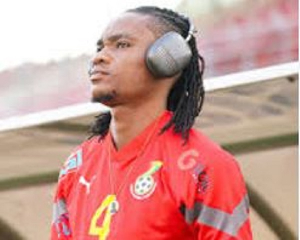Finally, residents of Sodom and Gomorrah, near Agbogbloshie, Accra, considered as one of the world’s notable slums, have every practical reason to expect a justifiable evacuation after Government has managed to find 10 million euros to find alternative decent accommodation for them.
The Statesman can confirm that the Ministry of Water Resources, Works & Housing has secured the funding commitment from KBC Bank of Belgium as a necessary extension works to complete the environmental and sanitation aspects of the Korle Lagoon Ecological Restoration Project.
In 1999, the National Democratic Congress signed an $89 million contract for the KLERP. But, the volume of silt continues to increase and the proximity of the 30 hectare ghetto, ‘housing’ an estimated population of 20,000 people, is mainly blamed for this.
Government was just last week criticised by a group of influential academics, led by Nana SKB Asante, as “lacking the political will” to clear the Sodom and Gomorrah slums.
Government had earlier last month secured 18.8 million euros to complete the KLERP, because despite the completion of the original scope of works under the earlier contract, works still remaining to be done include the removal of construction dyke, desilting of upstream canals and re-dredging of the lagoon. Also the temporal bypass available is not designed to carry higher flow volumes.
But, Cabinet demanded that the approval of the phase II project to restore the lagoon would only receive approval if it was linked to the total evacuation of the ghetto. Hackman Owusu-Agyemang, the chairman of the cabinet sub-committee on infrastructure, was tasked earlier this month to find the extra money, which was secured this week.
The slum community has no system of waste collection and no sewage system. Squatters freely use the project area for dumping of human waste, dumping them in the drains of Agbogbloshie. The illegal residents are also accused of removing dyke material along the canal.
The low ground even makes the area highly dangerous for human settlement since it is very prone to flooding. The completion of the entire KLERP project, scheduled to be done by 2007, to coincide with the resettlement exercise, is expected to highly raise the market value of the area.
The end of the maintenance period of the original KLERP contract is October 2006 and work is expected to begin for the second phase straight after. Mr Owusu-Agyemang, in conjunction with Jake Obetsebi-Lamptey of Tourism, Regional Minister I C Quaye, Local Government Minister Asamoah Boateng and AMA boss Adjiri Blankson will be working on the radical project to evacuate the slum and construct alternative accommodation in the outskirts of the capital for those illegal residents of the area to be evacuated.
Sodom and Gomorrah is considered as one of the most hazardous human settlements on earth. Not so long ago, wildfire gutted some parts of the settlement near Agbogbloshie.
There have been several futile attempts to relocate the inhabitants from the area. The failure has been mainly caused by lack of moral authority, due to past inability of governments to mitigate the evacuation of some of the country’s most deprived people with the provision of alternative housing. At one point, the squatter settlers got a court injunction to stop Government from moving them out of one of the most potentially prime commercial sites in the capital.
The people there live in ramshackle wooden and aluminum structures in an area seen as haven for hardened criminals, drug users and prostitution. In March 2001, E T Mensah (NDC MP for Ningo Prampram) and former AMA Mayor called for the immediate demolition of Sodom and Gomorrah, an area that developed under the very noses of local authority officials over the previous decade. Contributing to the motion for the approval of ¢209,478,797,778 for the Ministry of Local Government and Rural Development at the time, he said the Korle Lagoon Restoration Project embarked upon by the previous government could only succeed if the ghetto created on the banks of the lagoon in Accra was demolished.
A survey undertaken in 1992 to determine the number of approved houses proved that of the 380,000 completed buildings in the city, only 15 percent have approved legal permits. The situation is said to have only worsened in the years since then.
Just last week, participants at this year’s Ghana Academy of Arts and Sciences lectures reportedly cast doubt on the political will to implement the strategies outlined in the Growth and Poverty Reduction Strategy II Document, citing the inability of Government and its agencies to implement simple directives.
They argued that the creation of slums around the Odaw River was delaying the implementation of the Odaw River Reclamation Project, describing it as serious drain on the national economy.
Ivan Addae-Mensah, a member of the Academy, said despite the millions of dollars pumped into the Odaw River Project, it could not go forward because the authorities had allowed slums to spring up around it.
He called for the political will to clear the slum called Sodom and Gomorrah. “If that money had gone to develop some rural area, the change would have been so immense.”
General News of Friday, 21 July 2006
Source: Statesman
















